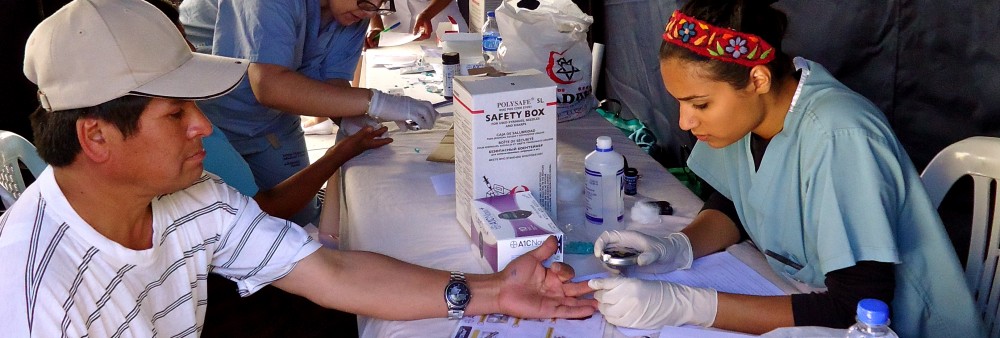As I mentioned in my previous post, YES, Tuberculosis has a cure. But, it is a slow and painstaking recovery. It takes an antibiotic regiment of at least 6 months to eradicate the disease from a patient’s body.
Have you ever been on an antibiotic regiment that caused you to feel side effects like nausea? Imagine 6 months of that—amplified.
Many patients experience harsh, uncomfortable side effects to the antibiotics that can result in abandonment of treatment. Also common are patients who abandon treatment when they start feeling better, before their course of antibiotics is complete. Unfortunately, these types of patients are not cured of TB and symptoms usually re-emerge, which are harder to treat the second time around. Abandoning, or improper treatment, are a few ways of developing multi-drug resistant strains of TB (MDR-TB), which are much more dangerous and difficult to treat than regular TB.
In attempt to circumvent some of these problems, the World Health Organization’s standard for TB treatment is DOTS (Directly Observed Therapy, Short Course). As per DOTS guidelines, a health professional, or more commonly, a community health worker, must physically watch a patient take his/her dose of antibiotics daily, and counsel him/her through the side effects and tribulations of treatment. However, due to the time and human capital that this treatment model entails, many countries, especially those with poor health systems, little public health infrastructure, and small budgets allocated to healthcare, struggle to provide DOTS and curb the TB epidemic in their own backyards. As stated before, the people affected by this disease live in poor conditions, and can certainly not afford to see private physicians and pay for their treatment. They also cannot afford to forgo wages and responsibilities in order to travel long distances to health clinics to retrieve their medicines.
Operation ASHA in India—an Urban Model
In India, Operation ASHA operates in urban cities and slums (with high population densities). OpASHA sets up clinics to accommodate its patients by making sure that they are no more than 10 minutes walking distance from the nearest clinic. OpASHA even uses biometrics technology to ensure precision and efficiency. They employ a system called eCompliance at every clinic. The system is equipped with a small laptop computer, a fingerprint scanner, and an SMS modem. Patients visit the clinics regularly to see counselors and to take their meds—upon each visit, each patient checks in by scanning his/her finger print. At the end of each day, the system sends an SMS message central database which records and analyzes the data. An additional SMS is sent out to the counselors, informing them if one of their patients has missed a dose. A counselor then follows up with the patient and aims to complete the treatment. This model ensures that patients do not miss doses, and are receiving the proper counseling and support needed to complete treatment. The model is sustainable and cost-effective: it employs local community health workers and many times uses local shops and businesses as clinics, thereby providing employment and education. Though the NGO is not a complete solution for a lack of accessible and affordable healthcare, it is effective in curbing the debilitating incidence of TB rampant in India (see graphic below).
Operation ASHA in Cambodia—A Rural Model
Outside Phnom Penh, the capital of Cambodia, most areas are rural, and less densely populated. Consequently, an urban clinic model like the one in India is not the most efficient way to reach patients. Lack of access and long distances to health facilities are common problems in many rural areas. To address this problem, OpASHA has modified their model in Cambodia—counselors operate “mobile clinics,” and travel on motorbikes from village to village providing DOTS to their patients. Each counselor is assigned to a population served by one health center. Each day, the counselor treats enrolled patients and spends a considerable amount of time searching for new patients. Sample sputum is taken from each new “suspect patient” to be tested in the referral hospital (the health centers are not equipped with enough technology to make this diagnosis. The counselors all meet the “sputum collector” at a pre-assigned time and location; the sputum collector is the one who takes all the samples to the referral hospital lab. At the end of each day, each counselor sends an SMS to headquarters, reporting on his/her patients’ progress and any new cases detected. This way, OpASHA brings meds to the doorsteps of its patients, who otherwise would not have the time or resources to seek treatment. This type of mobile health (mHealth) model is increasingly popular in areas like Asia and Africa where mobile technology is becoming almost universal. It is the next “big thing” in global health, and is changing the way that public health is tackled in resource-poor settings
eCompliance has not yet been introduced to Cambodia, but the entire team here is eager to pilot it and incorporate it into the program. Minor adjustments may need to be made, as the apparatus would need to be mobile instead of placed inside a stationary clinic. However, it will be interesting to see if this technology could become a universally applicable model, and change the way TB is treated worldwide.



